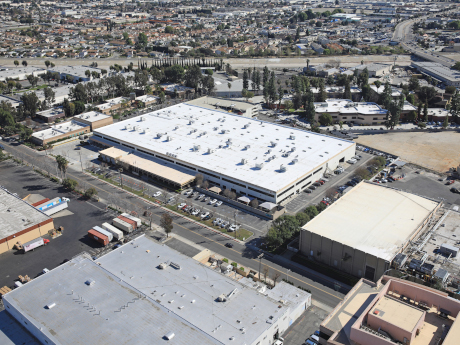— By Tony Solomon, Senior Vice President, District Manager, Marcus & Millichap —
Industrial continues to be one of the most sought-after asset classes across the Los Angeles County commercial real estate market. This year, the metro will maintain its position as one of the tightest industrial markets in the nation. It also ranks fifth in rent growth among major markets west of the Mississippi.
For the 17th time in the past 18 years, the Los Angeles metro’s industrial stock will increase by less than 1 percent, as 4.3 million square feet is slated for delivery. Supply additions will be concentrated in the South Bay and San Gabriel Valley, leaving less than 1 million square feet to come online in the rest of the county. While vacancy was below 2 percent in four of the metro’s biggest submarkets to start 2023, speculative completions and industrial users re-evaluating their space requirements will push vacancy to 3 percent by year end. This is a rate 80 basis points under the long-term mean. Rents are projected to grow by 7.6 percent as a result, bringing the average asking rate to $21 per square foot.
Part of this rise in vacancy can also be attributed to uncertainty in the labor market in the first half of the year, which is expected to affect container volumes in the ports of Los Angeles and Long Beach. West Coast dockworkers have been working without a contract since last summer, causing shippers concerned about labor disruptions to shift cargo to ports along the Gulf Coast and farther east. Contract negotiations for a new labor agreement between the Pacific Maritime Association and the International Longshore and Warehouse Union began last spring. High-level negotiations are ongoing, and the expectation is that an agreement will be reached in time to take effect in May.
With minimal pressure from the supply side, the land-constrained Los Angeles metro will see industrial users relying on existing space. This tenant demand for cost-effective space throughout the market will attract investment capital. Limited vacancy in the South Bay and San Fernando Valley will draw active investors searching for property upgrade and re-tenanting opportunities that provide upside. The lack of construction and proximity to the Inland Empire and Central Valley will bring prospective buyers to listings in the Santa Clarita, Antelope and San Gabriel valleys.
Investors looking for assets in industrial-heavy zones near freeways will focus on properties just south or east of Downtown Los Angeles. Assets in these areas are usually smaller, last-mile storage spaces or manufacturing venues that frequently trade for less than $5 million. This threshold is significant as the City of Los Angeles’ Measure ULA places a 4 percent tax on all commercial and residential real estate transfers valued above $5 million. While the city began collecting taxes from the measure on April 1, Measure ULA is currently facing legal challenges and may be opposed by a statewide proposition on the 2024 ballot that would invalidate it.


